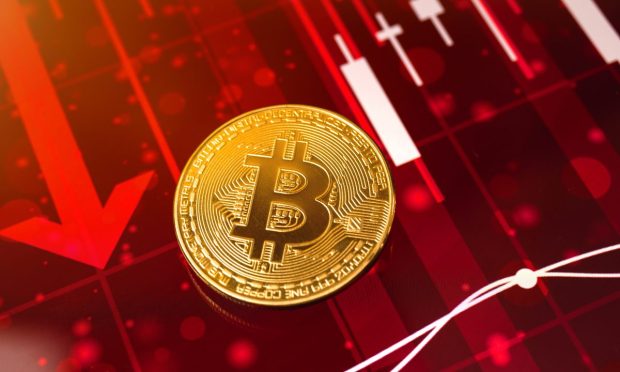Following Crypto Crash, Search for the Bottom Begins in Earnest

As bitcoin crashed well below the psychologically important $20,000 mark over the Juneteenth holiday weekend, bottoming out at levels not seen since the very beginning of the crypto bull market in November 2020, fears are growing that it will get a lot worse before it gets better.
Pointing out that just like the traditional equities markets, bitcoin has been propped up by the Federal Reserve dropping in the past two years, Bloomberg Intelligence analyst Eric Balchunas told Decrypt that’s not going to happen again anytime soon.
“In every past selloff there was this thought behind it that the Fed would step in if the market really needed it, and this time they’re not going to do that,” he said, adding that with an election coming and inflation skyrocketing to levels unseen in 40 years, “the Fed is serious this time.”
Without the Fed there to drop interest rates as the markets stumble, investors “are going to have to learn to live without the Fed, and that’s going to be painful,” he said. “It’s like coming off heroin — the first year is going to be rough.”
Growing Pessimism
With bitcoin having tumbled to $17,700 over the weekend, the price of the largest cryptocurrency tagged a 75% decline from its November 2021 high of about $68,700. And much of the cryptocurrency market has followed suit.
While BTC bounced back about $21,000 by Monday (June 20), it didn’t just break the psychologically important $20,000 mark — which bitcoin narrowly failed to reach in the 2017-2018 bull market — it smashed through it. That means there is very definitely some going back.
How low bitcoin can and will go is the question. Many analysts believe the answer is, lots.
“This is a dark winter ahead for crypto as the era of free money comes to an end with this weekend another brutal sell-off across the board,” Dan Ives, managing director and senior equity analyst at Wedbush Securities, told the Financial Times. “Risk assets are all getting thrown out the window.”
And Bloomberg noted that both Morgan Stanley and Goldman Sachs warned investors in the traditional markets that recession risks are still priced in for a mild downturn, rather than the severe one looking increasingly likely, “leaving them exposed to a further deterioration in expectations,” Goldman analysts said.
A Morgan Stanley spokesperson noted added that the “bear market will not be over until recession arrives or the risk of one is extinguished.”
Where’s the Bottom?
That matches many crypto analysts’ and investors’ belief that the worst is yet to come.
Saying that the Monday bounce isn’t a sign of good things to come, FxPro’s Alex Kuptsikevich told CoinDesk that until investors get used to the Fed’s tight money policy, “financial market pressures can quickly negate bounces in cryptocurrencies.”
Others told Decrypt that $16,000 or even $11,000 could be the new bottom, while Chris Terry, vice president at SmartFi, a decentralized finance (DeFi) lending platform, told CoinDesk that bitcoin needs to “take out all the short positions.”
This would mean about an 80% fall from the November highs, which he said would mean bottoming out around $12,000 to $13,000.
“The HODLer mentality is really being put to the test, and those that haven’t bailed yet may be as tempted as they’ve ever been,” added Craig Erlam, senior market analyst at FX broker Oanda, referring to bitcoin believers who say “hold on for dear life” despite market ups and downs.
Blockchain analytics firm Glassnode had a different perspective. Noting that as bitcoin hit $17,700 on Saturday (June 18 ), more than half of all bitcoins and wallets — 51% — were in the red.
“Historical bear market floors have bottomed between 40% and 45% of supply in profit,” the firm said on Monday (June 20).
However, bitcoin’s history goes no further back than 2009, and wasn’t widely known, held or worth enough to react to markets in any significant way until 2017. Inflation hasn’t been this high since 1982.
Sign up here for daily updates on all of PYMNTS’ Crypto coverage.
